Problems with modeling from Acad drawings
-
Well, there are many reasons AutoCAD doesn't play well with others - monopoly, closed and proprietary dwg file format, lack of information and above all the SketchUP's nature - mesh modeler! You can't expect the same level of precision in SketchUP - there is no real geometry - splines, curves, circles, arcs and etc. There are only lines, vertices and faces. I have a friend who is developing a furniture plugins for AutoCAD and He is always complaining about the lack of information Autodesk gives him about the internal structure of the solids. He ported the same code to the BricsCAD and it was a breeze - completely opened system for building external applications. Move on to a more advanced software or just draw everything in SketchUP from scratch - I did the first.
Little example - the circles and the arc are tangent. Imported in SketchUP - they even don't touch anymore.
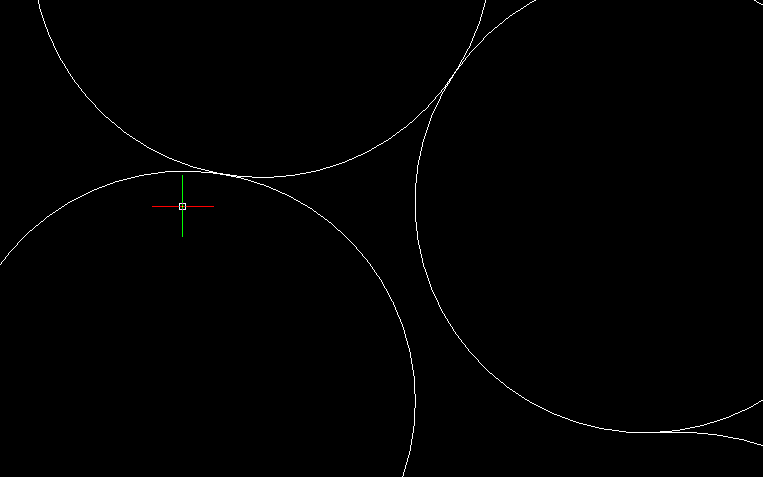
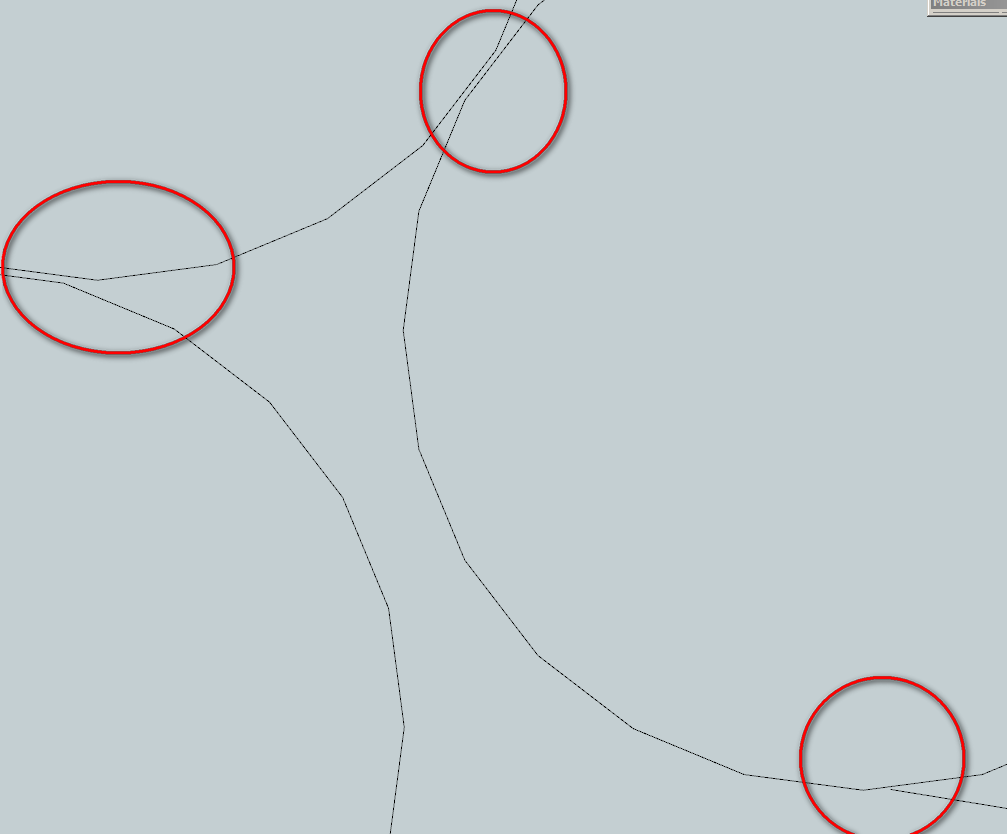
-
OK, guess I just have to deal with my client's drawings.
-
I make shop drawings so your woes are the story of my days.
As was pointed out above, the biggest cause of inaccuracy is coming from the client's end but I often work with drawings that have been converted - from VectorWorks to PDF or PDF to DWG or whatever. This process introduces inaccuracies due to how the software is reading the file. I use a program called Print2CAD to convert PDFs to DWG but it's only accurate to something like .003". Not a problem for someone looking at the drawing but it makes the drawing unusable for me unless I re-draw.
I find SketchUp to be a useful tool in this situation. Sometimes I get drawings that have so much useless data in them (deleted blocks, etc.) that it's worthwhile to run them through SketchUp and back out again as DWGs. That results, as you know, in every line segment being a separate line which is a problem in itself but I've found ways to work around that.
-
I have this problem even within my own office!
 Unfortunately, like many of the other folks here, I believe it is primarily human sloppiness. However, there is also an element of sloppiness in Autocad... for example, if you have the perpendicular and/or intersection snap turned on, you can get a snap that you didn't want. Or if you're going for an endpoint, but that line is just a little too long, you can draw a non-orthogonal line. Offset that and keep going and you've not started a cascade of trouble!
Unfortunately, like many of the other folks here, I believe it is primarily human sloppiness. However, there is also an element of sloppiness in Autocad... for example, if you have the perpendicular and/or intersection snap turned on, you can get a snap that you didn't want. Or if you're going for an endpoint, but that line is just a little too long, you can draw a non-orthogonal line. Offset that and keep going and you've not started a cascade of trouble!A few Autocad commands I've found that help:
-
overkill - deletes duplicate lines. Doesn't get overlapping ones, but at least it's a start.
-
For curves, I use "Break at Point" (it show's up as _break, but that's the usual command... I've always used it from the "Modify" toolbar). If a curve is intersected by a line, I break it at the intersection. That way when I get it into SU, the curve will always share an endpoint with the intersecting line.
-
pedit with the "multiple" option, then join as many as I can. This is especially helpful for building footprints, contours, and curbs. By making as many continous (and closed) polylines in Autocad, it saves a lot of time in SU. I know there are plenty of plugins for adding trim, extend, and fillet functionality to SU, but I like to do most of that in Autocad.
I often isolate layers and save them out separately to import into SU so they come in as components. A little more time up front, but helps speed things up in the long run.
I don't think there is any solution, but it's great to hear everybody's process for dealing with this perenial problem.
-
-
We use Autocad / SketchUp all the time and are back and forth between the 2 programs constantly.
If we produce the CAD drawings - no problem 99 % of the time.Occasional problems occur when curves turn into straight lines - sometimes you get clashes where previously in the CAD data you didn't. If you're aware of this SketchUp limitation you can get around it most of the time.
.........
If another Company has produced the CAD drawings then sometimes we have problems.
In other words, the problem you are experiencing is most likely not an Autocad problem.If your CAD operators are using AutoCad as opposed to another CAD package and exporting as dwg / dxf out then the problems are most likely to be CAD operator error ie sloppy drawing.
Zoom in to some of the linework junctions / intersections in Autocad - are the joins good ???
........
Some CAD packages that export dwg / dxf (ie none Autocad) can mess the data up.
We've been on the receiving end of some of this junk also - can be a real nightmare.
........
Make sure your CAD operators are using the Snaps correctly in Autocad - End Point, Mid Point, Perpendicular etc.
All linework should be crisply snapped together - no over / under shoots.
Get them to turn off Nearest Snap - or use with caution - can be lethal in the wrong hands !!!
.........
Data Clean Up (in Autocad)-
Turn drawing edge on - you should see a long flat line / lines. Anything above or below (0) is floating or drilled into the ground and needs fixing. (Manual Fix or FLATTEN)
-
FLATTEN Command - makes everything 2d
-
OVERKILL Command - eliminates duplicates
-
PURGEALL Command - Cleans out unused Blocks / Layers etc
.........
Hope this Helps
Howard L'
-
-
In Autocad, if you click on a vector you should see blue "grips". Right click on one of the grips select properties in the fly out menu. A tab should appear at the edge of the screen with a scroll window. Find the Z start, Z end. Edit the data in each of these fields. That's for one at a time. There is also a way to look globally at properties for all items whether polylines or vectors or arcs or whatever and look at these properties to find z values which can be corrected. Smart Blocks would have to be dumbed down by exploding, sometimes twice, before squashing to zero but you will lose 3d data you may have relied upon.
The only running snap I keep on is Intersection. You can Shift+right click to bring up snap context menu where you can change momentarily to any available snap. One I like a lot is Mid between 2 Points. This can be used for the "from point" and the "to point" for copying, mirroring, moving, and rotating and so on.
-
@honoluludesktop said:
One of the biggest problems is with attempting to place a surface on existing coplaner line ends, if there was a slightly overlapping line intersecting the face I was attempting to create, SketchUp refused to insert the face until I corrected the Acad drawing. Can anyone tell me if it matters that I import dxf or dwg files?
can you post a screenshot here
@honoluludesktop said:
Other problems I faced, was the weld.rb would frequently cause SketchUp to splat. Is that common?
I've never had that problem. I'd suggest you one useful plugin Makefaces ..it's available for free on smustard. You should surely give it a try. It's really useful plugin. I work with cad files a lot on sketchup and find this plugin really handy.
-
First is imported dwg
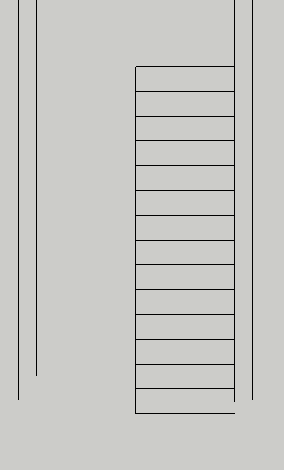 Then is attempt to surface steps. Note the lowest thread failed to surface.
Then is attempt to surface steps. Note the lowest thread failed to surface.
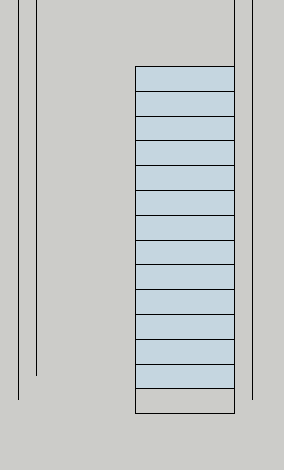 Then, clean up of extra lines.
Then, clean up of extra lines.
 Then, good surface.
Then, good surface.
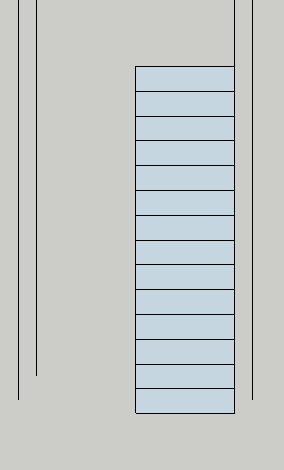 Detailed example of crossing line fragment.
Detailed example of crossing line fragment. 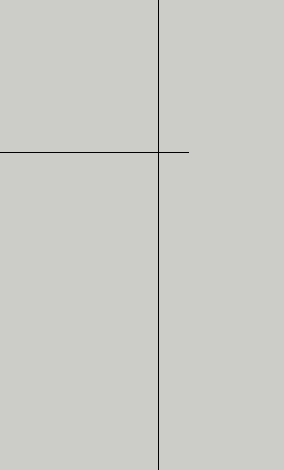 Because you asked, I looked more closely at the problem. The line fragment is very small, maybe the problem has to do with SketchUps defaults as to selecting inferencing points.
Because you asked, I looked more closely at the problem. The line fragment is very small, maybe the problem has to do with SketchUps defaults as to selecting inferencing points. -
@honoluludesktop said:
closely at the problem. The line fragment is very small, maybe the problem has to do with SketchUps defaults as to selecting inferencing points.
Try my Edge Tools 2 plugin, I got a tool there that highlights open ends and tries to close them, or remove tiny edge fragments.
-
I will vouch for thomthom's Edge Tools. Very effective. Salute to you, Thomas!
-
Thanks for the heads up, sounds like it will be a big help.
-
+1 on this one. This is the way I always do it.
@yahellid said:
In general, I try to never use the actual lines from the CAD file as lines for my sketchup model. It's almost always a matter of putting it on a locked layer and tracing over it. That way I know that what I'm doing is clean and organized as I need it.
-
What's a locked layer?
-
@honoluludesktop said:
What's a locked layer?
you can hide a layer - maybe they mean this? i just group it though.
also i thought there was a plugin somewhere maybe called StrayLines that was a big help for this. MakeFaces is good for dwg imports too.
-
An old trick I use is to never use the imported linework except for inferencing. I place the imported drawing some way up from my "work plane". Then I draw a large rectangular face. Then I start modelling with the rectangle or line tool, placing it on the face until the "on face" tooltip appears, press down Shift, and start clicking away at the points in the imported 2D component. I also try to keep an eye on axiality to avoid the ******* small deviations that try to creep in (yes, there are sloppy drafters in my colleagues, and I am sometimes one too).
Anssi
-
Good ideas, all. Am trying out some at this time. Thanks.
-
@honoluludesktop said:
What's a locked layer?
The layer is visible but locked. You cannot edit it's contents in any way.
-
I can tell your working with architectural drawings. I'm going to say what most will not, and that is that architects are some of the absolute worst when it comes to drawing things precisely in autocad drawings. Snap to grid, ortho on and precision set to whole inches and over ridden dimensions everywhere are just a few of the issues we have seen in the majority of architectural cad files I have had the displeasure of dealing with. Why? I don't have any idea, but it is unfortunately more often the rule instead of the exception, and I would get fired for drawing things that way.
I apologize to those architects that don't do this, if you don't, be happy that you are the exception.
If you are one of those people that do this, don't bother making a defense for it, I really don't mind, we make a huge amount of money creating shop drawings and putting in change orders when the things specified are a physical impossibility and we get to charge to make it work.

-
I think in the context 'locked instance' was meant rather than 'locked layer' - you can't lock a layer in SKP [you can in CAD] BUT you can 'lock' a SKP's groups and instances so that they can't be moves, deleted or changed until you 'unlock' them...
On the topic of rubbish CAD drawings... I once had the unenviable task of doing the construction drawings and documents for a maximum security prison originally designed by one of the governments most respected consultants and signed off on a set of design drawings and a scaled wooden model. We got the CAD drawings [plans, sections and elevations] and set about working up the scheme. I realized that you couldn't form the complex hipped roof as they had shown on the roof plan and elevations - there were two eaves heights between two main block 'wings' with a connecting 'arm' - there are rules about prison roofs having no flat or hidden areas, slopes, non-grapple-ability etc... I was exasperated! After a lot of brain ache I came up with a solution that worked to everyones satisfaction... We had never seem the physical model because it was on someones desk at the Home Office. When I discreetly raised the balls up with one of their architects she said, 'Oh yeah, we knew the roof didn't work when we came to make the physical model and had to fudge it - we didn't have time to change the drawings...' [they also didn't have the courtesy to tell us either]
 IF they had made a simple SKP model it would have showed them at an early stage that the 2D CAD just didn't work - it is possible to check that your 2D CAD DWGs all align and work in unison BUT too difficult for many to bother to do
IF they had made a simple SKP model it would have showed them at an early stage that the 2D CAD just didn't work - it is possible to check that your 2D CAD DWGs all align and work in unison BUT too difficult for many to bother to do 

-
I was just looking at this issue on importing AutoCAD to Sketchup and I wanted to find places where there was discontinuity in connecting lines. Well it turns out it looks like sketchup really has a problem with AutoCAD curves, and this seems to be where most of my problems arise. I saw that where straight lines meet a curved arc, the lines almost rarely meet. However I went back and looked at the ACAD file and the line is definitely hitting the curve. I know Sketchup has never been very good with curves so this must be one of the main issues with importing, besides bringing in imprecise ACAD drawings.
Advertisement







